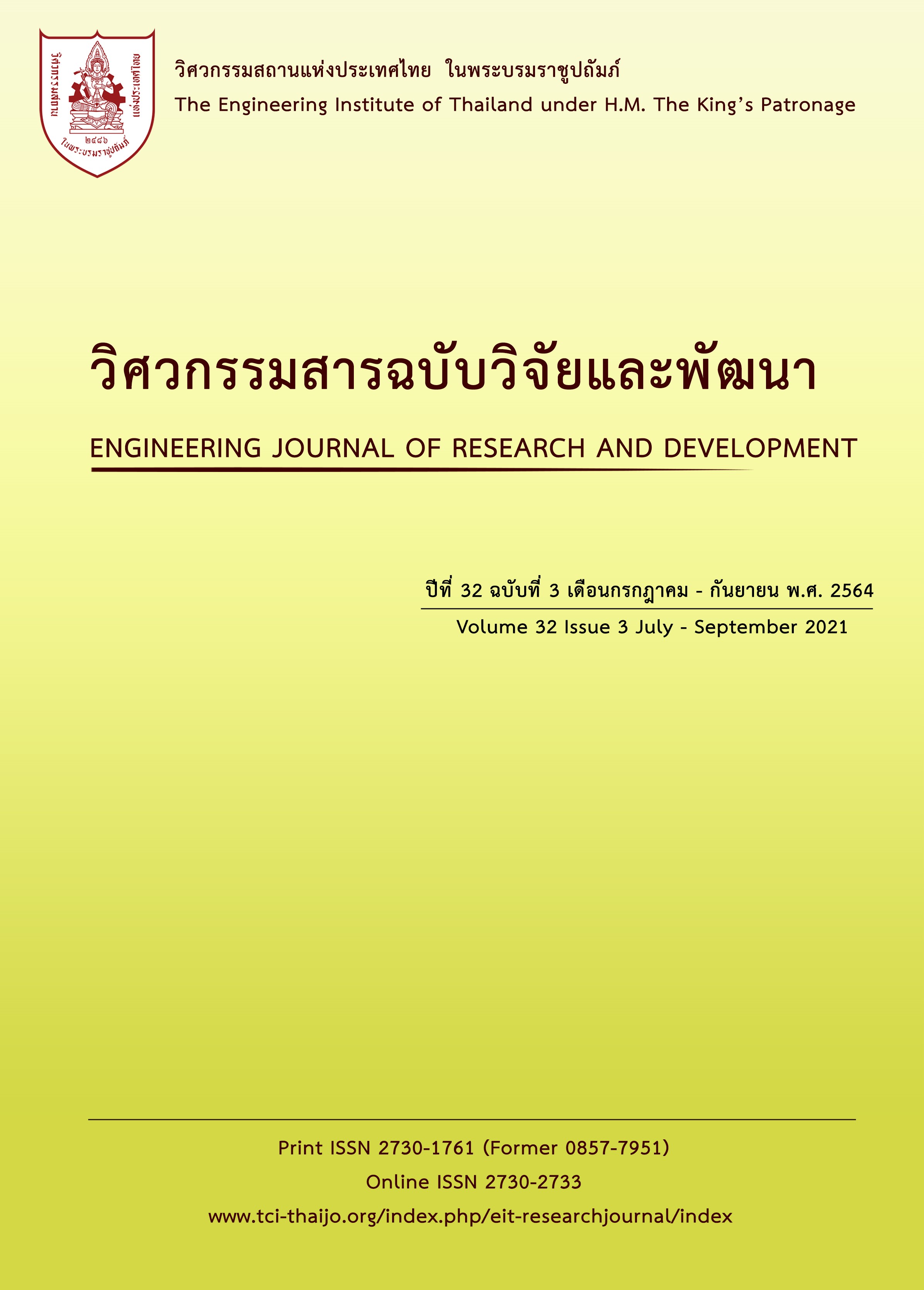CHLORIDE PENETRATION RESISTANCE, ELECTRICAL RESISTIVITY AND MECHANICAL PROPERTIES OF CONCRETE WITH ARAMID FIBER
Main Article Content
Abstract
This paper aims to study the effect of aramid fiber on chloride penetration resistance, electrical resistivity and mechanical properties of concrete. The study used aramid fibers with two different shapes of straight and twisted, and three aspect ratios of 60, 80 and 100. Bulk chloride diffusion, rapid chloride penetration, electrical resistivity, compressive strength and tensile strength of concrete were investigated. Water to binder was kept at 0.55, and the fiber content of 1% by volume of concrete was applied. From the experimental results, it was found that aramid fiber reinforced concrete (AFRC) had higher bulk chloride diffusion resistance and rapid chloride penetration resistance than controlled concrete without fiber. AFRC had higher both surface and bulk electrical resistivities than no-fiber concrete. The use of aramid fiber in concrete did not significantly affect the compressive strength for mechanical properties, but it greatly increased the tensile strength of concrete. Besides, the presence of fibers improves damage patterns of concrete specimens to be more ductile.
Article Details
The published articles are copyright of the Engineering Journal of Research and Development, The Engineering Institute of Thailand Under H.M. The King's Patronage (EIT).
References
KMUTT Research and Development Journal, 2007, 30(2), pp. 345-362. (in Thai)
[2] Sua-iam, G. and Makul, N. Use of palm fiber as a reinforced fibre for improving the bending strength of lightweight foam concrete. Engineering Journal of Research and Development, EIT, 2016, 27(3), pp. 29-36.
[3] Larisa, U. et al. Fiber-reinforced concrete with mineral fibers and nanosilica. Procedia Engineering, 2017, 195, pp. 147-154.
[4] Prak, L. and Sumranwanich, T. Compressive strength and water permeability of concrete mixed with steel fiber. In: proceedings of the 25th national convention of civil engineering, Chonburi, Thailand, 15-17 Jul 2020, pp. 1826-1830. (in Thai)
[5] Löfgren, I. Fibre-reinforced concrete for industrial construction - a fracture mechanics approach to material testing and structural analysis. Dissertation, Göteborg. Chalmers University of Technology; 2005.
[6] Abrycki, M. and Zajdzinski, A. Effect of fibres on corrosion of steel reinforcement. Master’s thesis, Göteborg. Chalmers University of Technology, 2012.
[7] Permsuwan, P. et al. Corrosion of different types of steel in atmospheric and tidal marine environment of Thailand. Engineering Journal of Research and Development, EIT, 2011, 22(4), pp. 17-24.
[8] Berrocal, CG. et al. Influence of steel fibres on corrosion of reinforcement in concrete in chloride environments: a review. In: proceedings of the 7th international conference of fibre concrete, Prague, Czech Republic, 12-13 Sep 2013, pp.1-10.
[9] Sumranwanich, T. and Tangtermsirikul, S. Concrete structure deterioration. Bangkok: Charansanitwong Printing; 2018. (in Thai)
[10] American Society for Testing and Materials. ASTM C1556. Standard test method for determining the apparent chloride diffusion coefficient of cementitious mixtures by bulk diffusion. 2004.
[11] American Society for Testing and Materials. ASTM C1152. Standard test method for acid-soluble chloride in mortar and concrete. 2004.
[12] American Society for Testing and Materials. ASTM C1202. Standard test method for electrical indication of concrete’s ability to resist chloride ion penetration. Annual Book of ASTM Standards, 2004.
[13] American Association of State Highway and Transportation Official. AASHTO TP95. Standard method of test for surface resistivity of concrete’s ability to resist chloride ion penetration. 2011.
[14] British Standards Institution. BS EN 12390. Testing of hardened concrete, London: British Standards Institution. 2009.
[15] American Society for Testing and Materials. ASTM C496. American standard test method for splitting tensile strength of cylindrical concrete specimens. Annual Book of ASTM Standards, 2004.
[16] Singh, AP. Strength and permeability characteristics of steel fibre reinforced concrete. International Journal of Civil and Environmental Engineering, 2013, 7(10), pp. 733-738.
[17] Singh, AP. and Singhal, D. Permeability of steel fibre reinforced concrete influence of fibre parameters. Procedia Engineering, 2011, 14, pp. 2823-2829.


